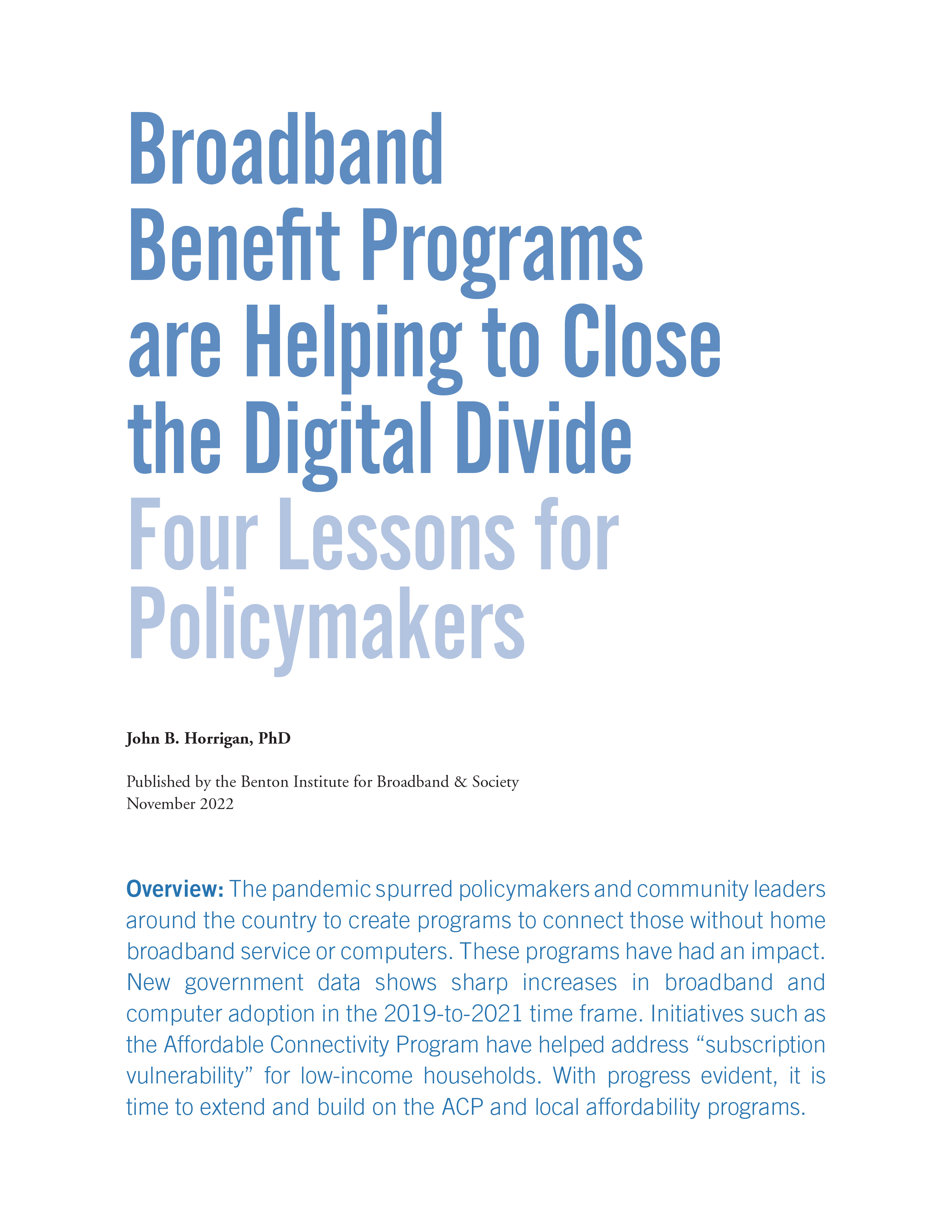Broadband Benefit Programs are Helping to Close the Digital Divide
Written by John B. Horrigan, PhD
Four Lessons for Policymakers
Recently released data from the American Community Survey shows substantial increases in household wireline broadband adoption from 2019 to 2021—an increase of more than twice the rate of growth compared to the 2017-to-2019 interval. This suggests that pandemic-driven initiatives to address home adoption gaps have had an impact. Notably, increases in home broadband subscriptions have been most pronounced in cities with higher-than-average rates of poverty. Recent progress on home broadband adoption has been greatest among America’s least wired cities.
What are the implications for state and local policymakers making plans for Broadband Equity, Access, and Deployment and Digital Equity Act funding from the Infrastructure Investment and Jobs Act?
1. Discover, grow, and replicate
The data show that progress is possible. State broadband planners should determine where it is happening, build upon it, and replicate it in other parts of the state.
2. Do not grow complacent—subscription vulnerability is a persistent problem
The Affordable Connectivity Program (ACP) is scheduled to sunset when funding runs out—which could occur sometime in 2024. Policymakers should extend the program beyond its current funding limit.
3. Focus more on affordability and less on technology
Adoption patterns have shifted under the ACP. Through September 2022, 56% of the 13.5 million ACP enrollees are wireless users, with 43% having enrolled in wireline service. These shifting adoption patterns indicate that the ACP-eligible population is using the subsidy to satisfy their affordability needs as they see them.
4. Take a bow, but don’t take a rest
We are in an era when the potential to tackle the digital divide has never been greater. Maintaining funding to help households address affordability challenges is a looming concern.


